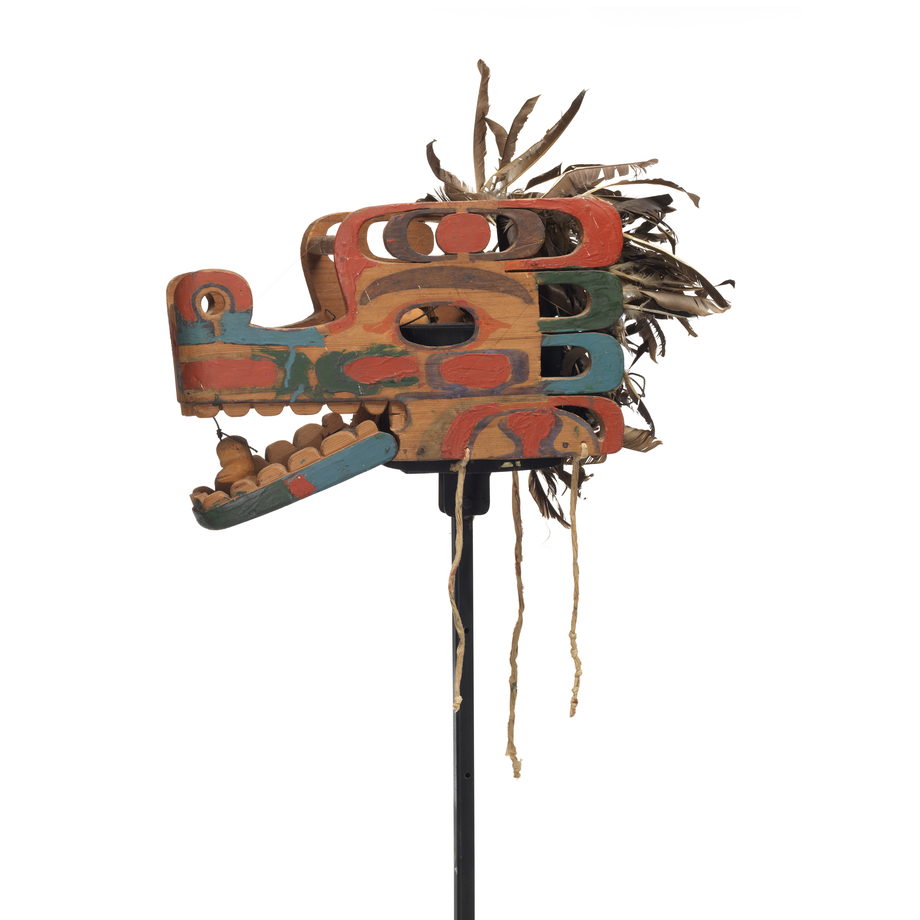Haietlik
Serpent
This type of headdress originates from the Nuu-chah-nulth people from the West Coast of Vancouver Island. The headdresses in the Potlatch Collection represent Sea Serpents and Wolves, this right has been given to the Kwakwaka’wakw through marriage. Dance privileges from other cultural groups are highly prized by the Kwakwaka’wakw.
Catalogue Information
Materials
Wood, Cedar; Paint, Oil; Paint; Feather; Cloth, Cotton; Fibre, Twine; Metal, Iron
Dimensions
43.0 cm
Accession Number
80.01.024
Physical Description
Animal mask carved from red cedar in several pieces. Comprising two flat sides converging towards the front (the muzzle of the animal). The top, back and underside are open or partially open, with bracing sticks nailed to the top edges, and two pieces of wood nailed to the underside, which are shaped to encircle the wearer’s head. The lower jaw is hinged with nails. Inside, at the front of this jaw is nailed a small, unpainted carving of a bird (a raven?). The string, which manipulates the lower jaw is tied through a staple in the head of this small carving. The egg-shaped eyes (one is now missing) are carved separately and suspended with nails and wire inside the eye-socket. By means of strings and small lead weights they were designed to rotate vertically and show the eye in three different modes. The nostrils, upper and back edges have fretted circles and u-shapes cut out. Long wires are attached to the inside surfaces at the top and back edges. Tightly bound to these wires with string are many split feathers. More feathers are tied to the upper cedar bracing strut. A hooped split twig is jointed to the shaped headpiece to form a head rest. Strips of material are tied to the lower edges of the mask as harness ties. The mask is painted black, red, orange, blue and green, on an unpainted background. The mask has obviously been repainted.

 Video Downloads
Video Downloads